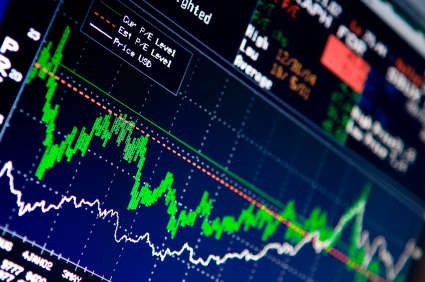 An investment issue that is constantly discussed during this current epoch of low interest rates is whether or not there are options available that will allow for the possibility of a decent return. There are definitely ways to curb your losses and also keep you within the stock market so that in the event of any positive gains, you will experience them.
An investment issue that is constantly discussed during this current epoch of low interest rates is whether or not there are options available that will allow for the possibility of a decent return. There are definitely ways to curb your losses and also keep you within the stock market so that in the event of any positive gains, you will experience them.
Market linked CDs provide a similar state of security to that of the traditional Certificate of Deposit (CD) as they are also FDIC insured with investments up to $100,000, this safety means that the principal that you invest will be 100% protected. The only way in which you could possibly lose your principal is if the Federal Deposit Insurance Corporation (FDIC) collapsed.
The predominant difference between market linked CDs and regular CDs lies in how your returns are determined.
Market linked CDs are linked directly to the stock market indexes, with some of the most well-known indexes including the S&P 500, The Dow Jones Industrial Average (DJIA) or the Nasdaq being included. The yield of an market linked CD is only calculated at maturity.
For example, here is how you calculate the return on a one year CD linked to the S&P 500:
S&P 500 on September 8 2009: 1025.39
S&P 500 on September 8 2010: 1,098.87
Increase of S&P 500: 7.2%
Return on CD with 100% Point-to-Point Participation: 7.2% APY
The length of an market linked CD most commonly varies between one and five years.
The sole risk regarding market linked CDs is losing out to inflation but there are also some additional considerations that you should take into account when exploring the possibility of investing in market linked CDs:
- The chosen indexes do have the possibility of facing a decline in value and the return investment could potentially be as low as zero.
- The amount of participation a particular market linked CD will have varies. EverBank’s Market Safe CD offers 100% participation of any gains in the linked index.
- The implications referring to taxes should be considered, any earnings that result from market linked CDs will be taxed within the year that they are generated. It is possible to put a delay on the taxable liability which you may face as long as the market linked CDs are purchased using a tax-deferred bank account.
- Another consideration that should be noted relates to liquidity. Any earnings that are made will not be available until the end of the four year period after which the market linked CD would have reached its peak maturity. This will mean that income will rarely be immediately accessible.
After taking into consideration all of the points that have been listed you will still need to be careful when exploring this avenue of investment and read thoroughly between the lines, then read again.
In conclusion, investments into market linked CDs are suited to those who are willing to be patient with their investment and who are looking for a lower risk option but still want to participate in any increases in the linked market.
